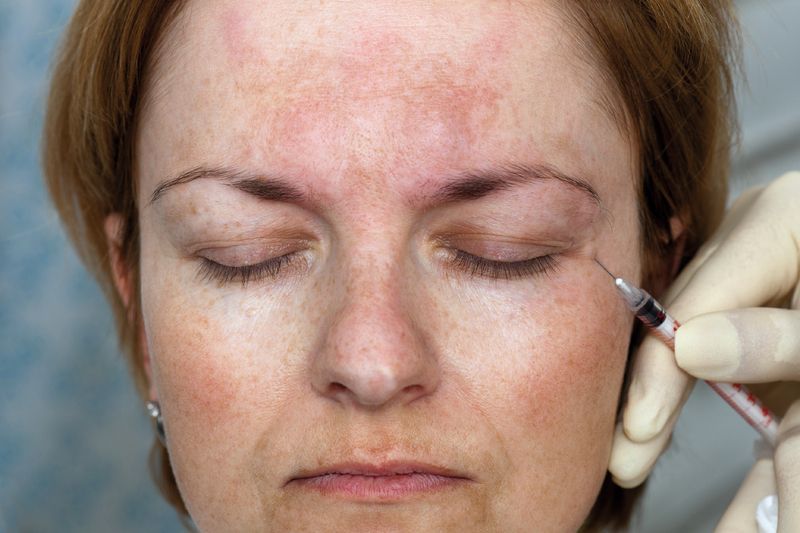
Cosmetic procedures such as Botox, facial fillers and laser skin treatments are very safe, and have a very low rate of minor side effects, a new study suggests.
These cosmetic procedures can cause minor side effects such as bruising, lumpiness or skin discoloration, but these occur in less than 1 percent of cases, according to the study published today (Nov. 5) in the journal JAMA Dermatology.
"We strongly suspected the rates were going to be low, but we were pleasantly surprised that they were as low as they were," said study lead author Dr. Murad Alam, a dermatologist at Northwestern University in Illinois. (In past work, Alam has conducted studies that were funded in part by Allergan, Medicis, Ulthera and Bioform, which are companies that sell products for cosmetic procedures.)
However, the study included only dermatologists who routinely perform these procedures, so it's possible that negative outcomes could be more frequent in the hands of less-experienced providers, said Dr. Michael C. Edwards, the president of the American Society for Aesthetic Plastic Surgery. [7 Plastic Surgery Myths Debunked]
Also, the researchers did not collect data on whether people were satisfied with their appearance after the procedures. Even if they don't experience bruising, swelling or lumpiness, it's still possible that people simply don't like the way they look after cosmetic procedures, Edwards noted.
Low risk
In the past several years, minor cosmetic procedures such as laser skin treatments, Botox and facial fillers have surged in popularity. Botox is aimed at smoothing out wrinkles, whereas facial fillers are used to plump up features that have been deflated by age or sun exposure. Lasers are used for removing hair, tattoos and spots on the skin, as well as tightening the skin. Unlike traditional facelifts, these procedures can be done without general anesthesia, and patients often need only a day to recover, Alam said.
Sign up for the Live Science daily newsletter now
Get the world’s most fascinating discoveries delivered straight to your inbox.
Doctors suspected that the risks of these procedures were fairly low, but previous studies had looked at only a small number of cases, from individual doctors' recall of patients' side effects, after the fact . To more rigorously examine the rate of side effects, Alam and his colleagues asked 23 dermatologists throughout the U.S. to enter data on each cosmetic procedure they performed for three months, along with any adverse events the patients reported over the next year. All told, the team looked at 20,399 procedures.
About 1 in every 416 procedures resulted in a negative outcome such as bruising, swelling or lumpiness in the skin. But some procedures were riskier than others. Procedures involving neurotoxins, such as Botox, caused side effects in just 1 in 3,333 cases, whereas fillers such as Juvederm caused lumpiness or beading in about 1 in 135 cases.
The low rate of side effects may make these treatments an attractive alternative to a facelift, which requires cutting the skin and going under anesthesia, Alam said.
"By doing lots of small procedures we can avoid the risk of a larger procedure," Alam told Live Science.
Safety varies
Although the findings show these procedures are generally very safe, the researchers looked at board-certified dermatologists, Edwards said. But the safety of these procedures hasn't been studied in less- experienced hands, and the procedures can still cause real harm, he said.
For instance, using a high-energy laser at the wrong setting can block blood vessels and cause tissue death, he said.
"The strip malls and the storefront mini-spas and places where there's no true oversight — that's where patients should be more cautious," Edwards told Live Science.
Follow Tia Ghose on Twitter and Google+. Follow Live Science @livescience, Facebook & Google+. Originally published on Live Science.

Tia is the managing editor and was previously a senior writer for Live Science. Her work has appeared in Scientific American, Wired.com and other outlets. She holds a master's degree in bioengineering from the University of Washington, a graduate certificate in science writing from UC Santa Cruz and a bachelor's degree in mechanical engineering from the University of Texas at Austin. Tia was part of a team at the Milwaukee Journal Sentinel that published the Empty Cradles series on preterm births, which won multiple awards, including the 2012 Casey Medal for Meritorious Journalism.












